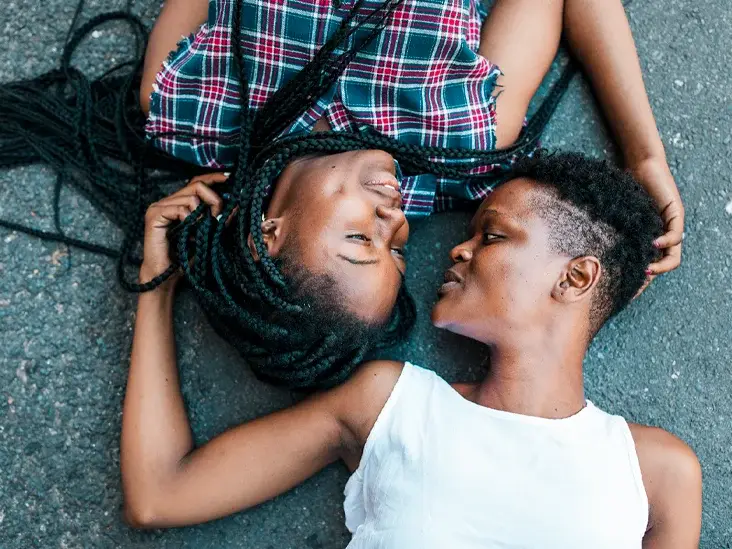In the rich and diverse tapestry of human sexuality, two threads often go unnoticed: bisexuality and asexuality. These orientations, though quite different from one another, both challenge traditional binary perspectives on sexual attraction. However, they are frequently misunderstood, leading to misconceptions and stereotypes. This blog aims to provide an enlightening exploration of bisexual and asexual, shedding light on their uniqueness, common struggles, and experiences.
Contents
What Does It Mean To Be Bisexual or Asexual?
 Sexuality is a deeply personal aspect of who we are. The way it is expressed or experienced can greatly vary from person to person. And understanding these variations can help foster greater empathy and inclusivity. This understanding begins with clear definitions. Let’s explore what it means to be bisexual or asexual.
Sexuality is a deeply personal aspect of who we are. The way it is expressed or experienced can greatly vary from person to person. And understanding these variations can help foster greater empathy and inclusivity. This understanding begins with clear definitions. Let’s explore what it means to be bisexual or asexual.
Bisexuality is a sexual orientation where a person is attracted to both men and women. It’s crucial to remember that bisexuality isn’t necessarily a 50/50 split. One might feel more attracted to one gender over the other or experience shifts in attraction over time.
Asexuality, on the other hand, is a sexual orientation characterized by a lack of sexual attraction toward others. Asexual people, also known as “aces,” may not experience sexual desire or attraction. But this doesn’t necessarily mean they lack romantic feelings. Many asexual people still desire romantic relationships. In fact, they simply don’t associate these relationships with sexual activity. It is a valid sexual orientation, like heterosexuality, homosexuality, or bisexuality.
Understanding these definitions is just the first step towards accepting and celebrating the rich diversity of human sexuality. In doing so, we cultivate a society where everyone feels seen, validated, and understood.
What Are The Differences Between Bisexual And Asexual?
While both bisexuality and asexuality fall under the broad umbrella of sexual orientations, they significantly differ from each other in their central characteristics. The main difference lies in the nature and object of sexual attraction experienced by individuals who identify as bisexual or asexual. Here are some key differences:
Attraction
The primary difference between bisexuality and asexuality revolves around attraction. Bisexual individuals are sexually attracted to both men and women and potentially people who identify outside of the gender binary. Their attractions can vary in strength and fluctuate over time. Asexual individuals, on the other hand, do not experience sexual attraction. They don’t experience a drive to engage in sexual activity with others, regardless of gender.
Romantic Relationships
Both bisexual and asexual individuals can engage in romantic relationships, but the role of sexuality in these relationships differs. For many bisexual people, sexual attraction is a component of their romantic relationships, though this isn’t the case for all. Conversely, many asexual individuals engage in romantic relationships that are not characterized by sexual desire or activities. For them, emotional intimacy is not necessarily linked with sexual attraction.
Sexual Activity
While bisexual individuals typically engage in and enjoy sexual activities (as do heterosexual and homosexual individuals), this is not always the case for asexual individuals. Some asexual people may choose to have sex for a variety of reasons, such as to please a partner or to have children, but they generally do not experience sexual attraction or a desire for sex. However, this varies from person to person, as asexuality, like all sexual orientations, exists on a spectrum.
Desire for Relationships
Bisexual people, like people of other sexual orientations, typically desire romantic and/or sexual relationships based on their attractions. Asexual people, however, may not desire sexual relationships due to their lack of sexual attraction. This does not mean they can’t or don’t want to form deep, intimate bonds. In fact, many asexual people desire and have romantic relationships without sexual components.
Identity Spectrum
Both bisexuality and asexuality exist on spectrums. Within bisexuality, individuals can experience differing degrees of attraction to different genders. Within asexuality, some people may occasionally experience sexual attraction (gray-asexual) or only experience it after forming a deep emotional connection (demisexual).
In the end, it’s essential to remember that everyone’s experiences with their sexuality are unique. There is a vast range of diversity within both bisexuality and asexuality. These are not rigid categories, but fluid identities that can change and evolve over a person’s lifetime.
What Are The Common Challenges Faced By Both?
 People who identify as bisexual or asexual often face a variety of challenges due to societal misunderstanding and stigma around non-heteronormative sexual orientations. Although the specific struggles can vary, several common challenges can affect both communities.
People who identify as bisexual or asexual often face a variety of challenges due to societal misunderstanding and stigma around non-heteronormative sexual orientations. Although the specific struggles can vary, several common challenges can affect both communities.
Erasure and Invisibility
Both bisexual and asexual people often deal with their identities being erased or invalidated. Bisexual individuals can face “bisexual erasure,” or the tendency for people to ignore, deny, or underestimate bisexuality. They may also be falsely perceived as being either straight or gay based on their current partner’s gender. Asexual individuals similarly face “asexual erasure,” where their orientation is dismissed as nonexistent. Or seen as a phase, a medical problem, or a result of trauma.
Misunderstandings and Stereotypes
Both orientations are frequently misunderstood, leading to harmful stereotypes. Bisexual individuals often confront myths that they are confused, promiscuous, or simply seeking attention. Asexual individuals may be perceived as “cold,” emotionally distant, or immature due to their lack of sexual attraction. These stereotypes can lead to feelings of isolation and invalidate a person’s lived experiences.
Mental Health
The erasure, invisibility, and misconceptions surrounding these identities can have significant effects on mental health. Both bisexual and asexual individuals can experience higher rates of anxiety, depression, and other mental health issues compared to their heterosexual counterparts. This is often due to the stress of dealing with prejudice and the difficulties of living in a society that doesn’t fully acknowledge or understand their identities.
Discrimination and Prejudice
Both groups can face discrimination, sometimes even within the LGBTQ+ community itself. Bisexual individuals can face biphobia, which includes a range of negative attitudes, beliefs, and stereotypes about bisexuality. Asexual individuals may also face discrimination, with their identity belittled or invalidated by those who struggle to understand a life without sexual attraction.
Lack of Representation
Bisexual and asexual individuals often struggle with a lack of representation in media and popular culture. This lack of visibility can make it harder for people to understand and accept these identities, as well as for individuals to recognize and come to terms with their own orientation.
These challenges underline the importance of education, understanding, and acceptance in fostering a society where people of all sexual orientations feel seen, validated, and respected.
How To Support Both Bisxual And Asexual?
 Supporting someone who identifies as bisexual or asexual involves understanding, empathy, and active advocacy. Here are some ways to provide support:
Supporting someone who identifies as bisexual or asexual involves understanding, empathy, and active advocacy. Here are some ways to provide support:
- Educate Yourself and Others
Familiarize yourself with these identities, their unique challenges, and the spectrums they exist on. Understanding the nuances can make a significant difference in how you interact with individuals who identify as bisexual or asexual. Don’t be afraid to educate others and correct misconceptions when they arise.
- Respect Their Identity
Always respect a person’s self-identified sexual orientation. Avoid making assumptions about their experiences or invalidating their feelings. Remember, it’s not a phase or something that can be changed with persuasion.
- Validate Their Experiences
Acknowledge the struggles and discrimination that both bisexual and asexual individuals face. Listen to their experiences without judgment and show empathy.
- Offer Emotional Support
Be available for conversations and provide emotional support when necessary. It can be very beneficial to have someone they can openly talk to without fear of judgment or misunderstanding.
- Stand Against Discrimination
If you see instances of discrimination or erasure, stand up against it. Advocate for their rights, and actively involve yourself in creating a more inclusive environment.
- Promote Representation
Encourage and support a representation of bisexual and asexual individuals in various spheres of life, including media, workplaces, and social settings.
Providing support can have a significant impact on the lives of those who identify as bisexual or asexual. It fosters an environment where they feel seen, validated, and accepted for who they are.
Conclusion
As we navigate the intricate realm of human sexuality, it’s clear that understanding and acceptance are crucial for fostering a society where everyone feels seen and validated. Exploring the unique experiences of those who identify as bisexual or asexual, we have shed light on the nuances of these identities, dispelling common misconceptions and appreciating their diversity.
In understanding, acceptance, and celebration, we move forward together, affirming that every person’s sexual orientation is a valuable part of who they are, deserving respect and dignity. Life may sometimes be challenging for bisexuals, but Online Bisexual Counseling can help. Get experienced LGBTQ therapists at PrideMantra: Book a trial LGBTQ therapy session


